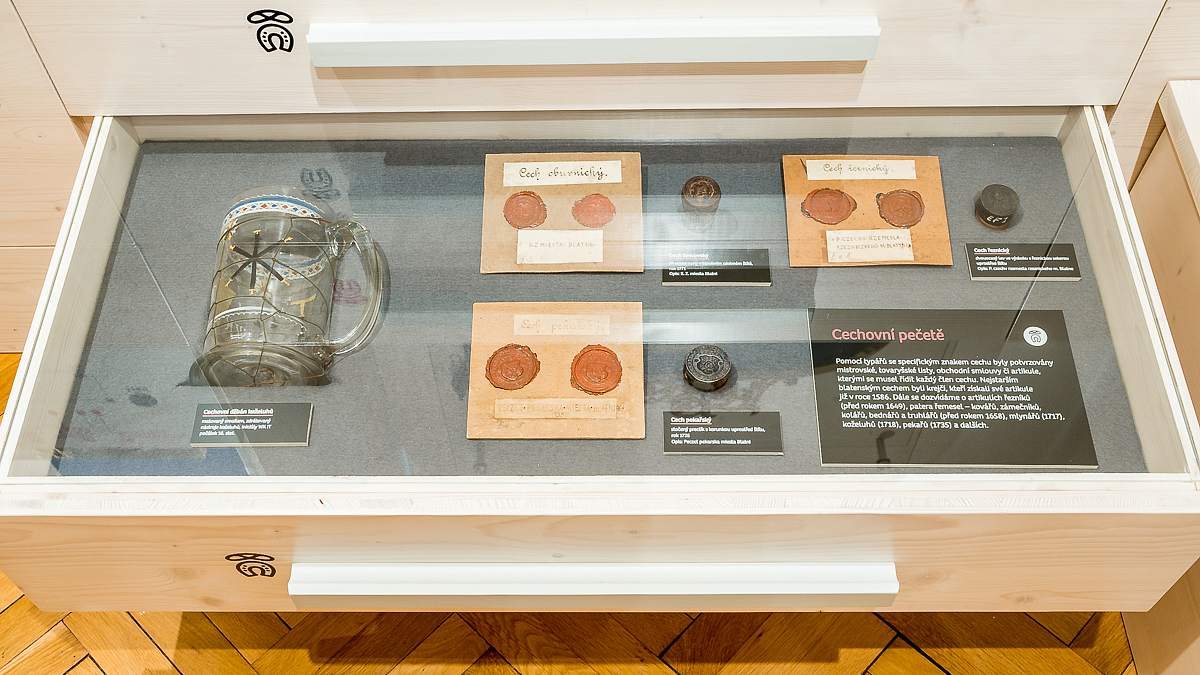GUILDS AND CRAFTS
As early as since the 15th century, craftsmen in Blatná associated in guilds to protect their own activities and to oversee the quality of products. A document from 1489 that lists meat shops from which their owner should pay tax can be regarded as the oldest mention of such a guild. A more convincing piece of evidence of the existence of an organization of craftsmen is their articles, which set out not only the rules for the operation of the craft, but also the moral principles for each member. The tailors of Blatná acquired their articles as early as in 1586. Furthermore, we learn about the articles of butchers (before 1649), the ‘group of five crafts’, i.e. blacksmiths, locksmiths, wheelwrights, coopers and carpenters (before 1658), millers (1717), tanners (1718), bakers (1735) and others.
Cobblers were the most numerous craft in Blatná. Before 1681, they had been certainly associated in a guild with their own guild rules, which they lent to shoemakers in Kasejovice. In 1753, there were 19 cobbler masters, who would be able to meet the order of 1,000 pairs of shoes placed by the military commission in 1788. By the end of the 19th century, this craft had grown to 75 cobbler masters and so there was a saying about Blatná: “It’s the cobbler’s place.”
The equipment of each guild also had to include seals and banners depicting the patron saints of the guild and its typical signs. The seal (also called the typist) served as the stamp of a guild to certify master’s and journeyman’s certificates and business contracts. The use of banners during processions was adopted by guilds from brotherhoods in the 18th century. These large banners were pulled out during holidays, important masses and funerals. They gradually disappeared after the reforms of Joseph II in 1782. It was not until 1803 that the guilds acquired smaller banners which would be placed on the edge of church pews.


